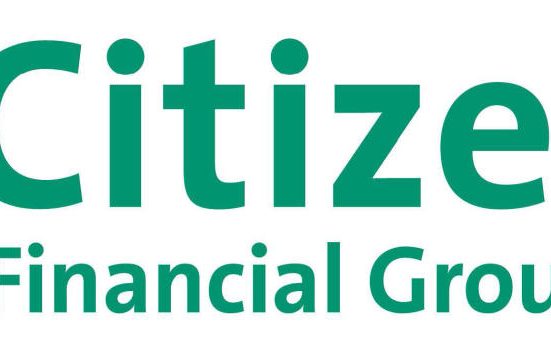Citizens Financial Group, Inc. (NYSE:CFG) Q1 2024 Earnings Call Transcript April 17, 2024
Citizens Financial Group, Inc. isn’t one of the 30 most popular stocks among hedge funds at the end of the third quarter (see the details here).
Operator: Good morning, everyone and welcome to Citizens Financial Group First Quarter Earnings Conference Call. My name is Alan and I’ll be your operator today. Currently, all participants are in a listen-only mode. Following the presentation, we will conduct a brief question-and-answer session. As a reminder, this event is being recorded. Now I’ll turn the call over to Kristin Silberberg, Executive Vice President, Investor Relations. Kristin, you may begin.
Kristin Silberberg: Thank you, Alan. Good morning, everyone and thank you for joining us. First, this morning, our Chairman and CEO, Bruce Van Saun; and CFO, John Woods, will provide an overview of our first quarter results. Brendan Coughlin, Head of Consumer Banking; and Don McCree, Head of Commercial Banking, are also here to provide additional color. We will be referencing our first quarter earnings presentation located on our Investor Relations website. After the presentation, we will be happy to take questions. Our comments today will include forward-looking statements, which are subject to risks and uncertainties that may cause our results to differ materially from expectations. These are outlined for your review on Page 2 of the presentation. We also reference non-GAAP financial measures, so it’s important to review our GAAP results on Page 3 of the presentation and the reconciliations in the appendix. With that, I will hand over to you, Bruce.
Bruce Van Saun: Thank you, Kristen. Good morning, everyone. Thanks for joining our call today. We were pleased to start the year with a solid quarter. We continue to play strong defense through an uncertain environment with a CET1 ratio of 10.6%, our LDR at 81%, our allowance for loan loss ratio of 161%, and general office reserves now at 10.6%. On the P&L, we are still seeing a modest decline in NII though our NIM was stable at 2.91%. Fees picked up by 3% sequential quarter, led by capital markets and card and expenses were flat. Our credit trends are in line with expectations. We repurchased $300 million of shares during the quarter as we free up capital from our non-core rundown. Our guide for Q2 and full year remain consistent with our expectations at the outset of the year.
Our strategic initiatives are making good progress. The Private Bank is off to a good start, reaching $2.4 billion in deposits at quarter end. We expect momentum to accelerate further over the course of the year. We are also focused on building out private wealth management through further investment in Clarfeld plus several imminent team lift-outs. Our New York City Metro initiative continues to go well with the fastest growth of any of our regions and really strong net promoter scores. Our focus in the commercial bank of serving the middle-market, private capital and key growth verticals has put us in great position to benefit from a pickup in deal activity, which we expect to build further over the course of the year. And our TOP 9 program is being executed well, allowing us to self-fund our growth investments while keeping overall expense growth rate muted.
While there are still many uncertainties in the external environment, we feel we are in good position to navigate the challenges that may arise and we maintain a positive outlook for Citizens over the balance of the year as well as the medium term. Over the past decade, we have undertaken a major transformation of Citizens. Our Consumer and Commercial Banking segments are positioned for success, and we are now looking to build the premier bank owned private bank and wealth franchise. Our balance sheet has been repositioned with an exceptionally strong capital liquidity and funding profile and we are deploying our loan capital more selectively to achieve better risk-adjusted returns. Our expense base has been tightly managed with AI offering the potential for further breakthroughs.
Lots accomplished with more to do, clearly, exciting times for Citizens. With that, let me turn it over to John.
John Woods: Thanks, Bruce and good morning, everyone. As Bruce mentioned, the year is off to a good start. First quarter results were solid against the backdrop of a more constructive macro environment, which supported an improvement in capital markets, stability in our margin and credit performance that continues to play out largely as expected. We continue to maintain a strong balance sheet with capital levels either top of our peer group, excellent liquidity and a healthy credit reserve position. Importantly, this positions us to execute well against our multiyear strategic initiatives, including the build-out of our private bank. Let me start with some highlights of our first quarter financial results, referencing slides 3 to 6 before I discuss the details.
We generated underlying net income of $395 million for the first quarter and EPS of $0.79. This includes a negative $0.03 impact from the private bank, which is a significant improvement from the $0.11 impact last quarter as we start to see revenues pick up and we progress to our expected breakeven in 2H ‘24. It also improved the impact of the non-core portfolio, which contributed a $0.13 negative impact. While our non-core portfolio is currently a sizable drag to results, it is steadily running off, creating a tailwind for performance going forward. Our notable items this quarter were $0.14, which primarily consists of an adjustment to the FDIC special assessment and TOP and other efficiency-related expenses. Excluding these notable items, our underlying ROCE for the quarter was 10.6%.
Playing through defense remains at the top of our priority list, and we ended the quarter with a very strong balance sheet position with CET1 at 10.6% or 8.9% adjusted for the AOCI opt-out removal. We also continue to make meaningful improvements to our funding and liquidity profile in the first quarter. Our pro forma LCR strengthened to 120%, which is well in excess of the large bank category 1 requirement of 100% and our period-end LDR improved to 81% from 82% in the prior quarter. On the funding front, we reduced our period-end FHLB borrowings by about $1.8 billion linked quarter to a modest $2 billion. We also increased our structural funding base with a very successful $1.25 billion senior issuance and another $1.5 billion auto collateralized issuance during the quarter.
And we have another $1 billion of auto backed issuance expected to settle this week. This is our fourth issuance, and it was executed at our tightest credit spreads to date. In addition, we expect to be a more programmatic issuer of senior unsecured debt going forward. Credit trends have been performing in line with our expectations, with NCOs coming in at 50 basis points for the first quarter. Our ACL coverage ratio of 1.61% is up 2 basis points from year-end. This includes a 10.6% coverage for general office, up slightly from 10.2% in the prior quarter. We are well positioned for the medium term with expected tailwinds to NIM that support a range of 3.25% to 3.4%. Regarding strategic initiatives, the Private Bank is doing very well. We continue to make inroads in the New York Metro and our latest top program is progressing nicely.
In addition, we are poised to benefit from an improving capital markets environment with our investments in the business and synergies from our acquisitions positioning us to capitalize as activity levels continue to pick up. Next, I’ll talk through the first quarter results in more detail, starting with net interest income on Slide 7. As expected, NII is down 3% linked quarter, reflecting a stable margin on a 2% decrease in average interest-earning assets given lower loan balances and day-count. As you can see from the NIM walk at the bottom of the slide, our margin was flat at 2.91% as the combined benefit of higher asset yields and non-core runoff and day count were offset by higher funding costs and the impact of swaps. As expected, our cumulative interest-bearing deposit beta remains in the low 50s at 52%.
And although we continue to see deposit migration, the rate of migration is slowing. Overall, our deposit franchise has performed well with our beta generally impact the peers. Moving to Slide 8. Our fees were up 3% linked quarter given a notable improvement in capital markets and good card results. The improvement in capital markets reflects a nice pickup in M&A activity and strong bond underwriting results. Our Capital Markets business consistently holds the top 3 middle market sponsor book renter position and this quarter, we achieved the #1 spot. Our deal pipelines remain strong, and we continue to see positive early momentum in capital markets this quarter with strong refinancing activity continuing in the bond market. In card, we had a nice increase, primarily driven by the benefit of a strategic conversion of our debit and credit cards to Mastercard.


Our client hedging business was down a bit this quarter with lower activity in commodities and FX. The decline in mortgage banking fees was driven by a lower benefit from the MSR valuation net of hedging and a modest decline in servicing P&L, partially offset by higher production fees as margin improved while lot volumes were stable. On Slide 9, we did a nice job managing our underlying expenses, which were stable. We will continue to execute on our TOP program, which gives us the capacity to self-fund our growth initiatives. On Slide 10, period end and average loans are down 2% linked quarter. This was driven by non-core portfolio runoff and a decline in commercial loans, given paydowns and generally lower client loan demand, our highly selective approach to lending in this environment, along with exits of lower returning credit-only relationships.
Commercial line utilization continued to decline this quarter as clients remain cautious and M&A activity was limited in the face of an uncertain market environment. Next, on Slides 11 and 12, we continue to do well in deposits. Year-on-year period-end deposits were up $4.2 billion driven by growth in retail and the private bank. Period end deposits were down slightly linked quarter given expected seasonal impacts in commercial largely offset by growth in the private bank and retail branch deposits. Our interest-bearing deposit costs were well controlled, up 6 basis points, which translates to a 52% cumulative beta. Our deposit franchise is highly diversified across product mix and channels. About 68% of our deposits are granular, stable consumer deposits and approximately 70% of our overall deposits are insured or secured.
This attractive deposit base has allowed us to efficiently and cost effectively manage our deposits in the higher rate environment. With the Fed holding steady, we saw the migration of deposits to higher cost categories continue to moderate. And with the contribution of attractive deposits from the private bank, non-interest-bearing deposits are holding steady at about 21% of total deposits. Moving on to credit on Slide 13. Net charge-offs were 50 basis points, up 4 basis points linked quarter. This includes increased commercial charge-offs related to pre general office, which were in line with our expectations. In retail, we saw a modest seasonal improvement. Non-accrual loans increased 8% linked quarter driven by general office. The continued runoff of the auto portfolio drove a modest decline in retail, while other retail categories were stable.
Turning to the allowance for credit losses on Slide 14. Our overall coverage ratio stands at 1.61%, which is a 2 basis point increase from the fourth quarter, reflecting broadly stable reserves with lower loan balances given non-core runoff and commercial balance sheet optimization. The reserve for the $3.4 billion general office portfolio represents 10.6% coverage, up slightly from 10.2% in the fourth quarter. On the bottom left side of the page, you can see some of the key assumptions driving the general office reserve coverage level. We feel these assumptions represent a severe scenario that is much worse than we’ve seen in historical downturns, so we feel the current coverage is very strong. Moving to Slide 15. We have maintained excellent balance sheet strength.
Our CET1 ratio is a strong 10.6% and if you were to adjust for the AOCI opt-out removal under the current regulatory proposal, our CET1 ratio would be 8.9%. Both our CET1 and TCE ratios have consistently been among the top of our peers, and you can see on Slide 16, where we stand currently relative to peers in the fourth quarter. Given our strong capital position, we resumed common share repurchases and including dividends, we returned a total of $497 million to shareholders in the first quarter. On the next few pages, I’ll update you on a few of our key initiatives we have underway across the bank, including our private bank. First, on Slide 17, we have a strong transformed consumer bank with a robust and capable deposit franchise, a diverse lending business where we are prioritizing relationship-based lending and a meaningful revenue opportunity as we scale our wealth business.
Importantly, we continue to make great progress taking deposit share with retail deposits up 20% year-on-year as we continue building our customer base in New York Metro. Slide 18. Let me update you on our progress in building a premier private bank, taking the opportunity to fill the void left in the wake of the bank failures last year. Our build net is going very well and gaining momentum. We are growing our client base and now have about $2.4 billion of attractive deposits with roughly 30% non-interest-bearing. Also, we are now at just over $1 billion of loans and $0.5 billion of investments and continuing to grow. We just opened our newest private banking office in Palm Beach, Florida, and we are opportunistically adding talent to bolster our banking and wealth capabilities with our Clarfeld Wealth Management business as the centerpiece of that effort.
Next, on Slide 19, we have built a formidable full-service commercial bank, which consistently punches above its weight. Our multiyear investments in talent, capabilities and industry expertise put us in an enviable position to provide life cycle services to middle market, mid-corporate and sponsor clients in high-growth sectors of the U.S. economy. In particular, we are uniquely positioned to serve the private capital ecosystem. As evidenced by our consistent standing at the top of the sponsored lead tables, we are well positioned to take advantage of a more constructive capital markets environment and we are excited to start seeing the synergies from our acquisitions coming through in our results this quarter. Moving to Slide 20, we provide the guidance for the second quarter.
We expect NII to decrease about 2%. Non-interest income should be up approximately 3% to 4%. We expect non-interest expense to be stable to down slightly. Net charge-offs are expected to be about 50 basis points and the ACL should continue to benefit from the non-core runoff. Our CET1 is expected to come in at about 10.5% with approximately $200 million of share repurchases currently planned. We are broadly reaffirming our full year 2024 guide. We expect NII to land within the range of down 6% to 9%, consistent with our January guidance, with margin coming in a little better than expected, offsetting the impact of lower loan demand. The other components of PPNR are also tracking to our January guidance. In addition, NCOs are trending in line with our expectations of approximately 50 basis points for the year.
Our target CET1 ratio for 2024 is approximately 10.5%, and the level of share repurchases will be dependent on our view of the external environment and loan growth. Given the changing rate outlook, I wanted to update you on how the swaps and our non-core portfolio are expected to impact NII and NIM as we look out further in 2024 and beyond. We’ve included Slide 25 in the appendix, which shows the expected swaps and non-core impact through 2027. By 4Q 2024, we expect higher swap expense to be partly offset by the NII benefit from the non-core rundown. Looking out further, we expect a significant NII tailwind and NIM benefit from the impact of non-core and swaps over the medium term given runoff and lower rates. This will be partially offset by the impact of the asset-sensitive core balance sheet, resulting in a medium-term NIM range of 3.25% to 3.4%.
To wrap up, we delivered a solid quarter, featuring stable NIM, strong fee performance led by capital markets and cards, tight expense management and in-line credit performance. We have a series of unique initiatives that are progressing well. Our consumer bank has been transformed. Our commercial bank is exceptionally well positioned and we aim to build the premier bank-owned private bank and wealth franchise. We enjoy a strong capital liquidity and funding profile that allows us to support our customers while continuing to invest in our strategic initiatives. Given several tailwinds, combined with continued strong execution, we are confident in our ability to hit our medium-term 16% to 18% return target. With that, I’ll hand it back over to Bruce.
Bruce Van Saun: Okay. Thank you, John. And Alan, let’s open it up for Q&A.
Operator: [Operator Instructions] Our first question will come from the line of Ryan Nash with Goldman Sachs. Your line is open.
See also 10 Best Low Volatility ETFs To Buy and
16 Best Dividend Stocks of All Time.
To continue reading the Q&A session, please click here.







